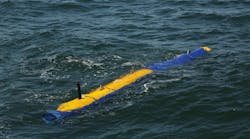ROCHESTER, N.Y. - The ITT Corp. Space Systems Division in Rochester, N.Y. has shipped to General Dynamics in Gilbert, Ariz., the next-generation commercial imaging payload for the GeoEye-1 satellite.
ITT’s contribution includes the design and manufacture of the electro-optical assembly (camera) that will take pan-sharpened, multispectral images of the Earth with better than 0.5-meter resolution from 425 miles above the Earth. GeoEye plans to launch GeoEye-1 later this year from Vandenberg Air Force Base, Calif.
The ITT imaging payload will capture information used to map and monitor a wide range of man-made and natural features on Earth, says Frank Koester, ITT Space System Division vice president and director of commercial and space science systems.
“The detail and geospatial accuracy of the imagery taken by GeoEye-1 will further expand the applications for satellite imagery in many commercial and government market sectors,” he says.
The delivery of the GeoEye-1 payload is the second of three sensors to be supplied by ITT under the U.S. government’s NextView program. ITT delivered the first sensor to DigitalGlobe for its WorldView I satellite.
The GeoEye-1 satellite will be equipped with the most advanced technology ever used in a commercial remote-sensing system. It will be able to precisely locate an object to within three meters of its true location on the surface of the Earth without the use of ground control points.
The ITT electro-optical “camera” delivered to General Dynamics, includes the optical telescope assembly, the detectors and focal-plane assembly, and the high-speed digital processing electronics.
Features include three camera modes-simultaneous, panchromatic, and multispectral, (pan-sharpened); ground spatial resolution of 0.41-meter panchromatic and 1.65-meter multispectral; about 700,000 square kilometers of imagery collection potential per day in the panchromatic mode and 350,000 square kilometers in the multispectral mode; and real-time imagery downlinks to international ground-station customers.
For more information contact ITT Space Systems online at www.ssd.itt.com.


